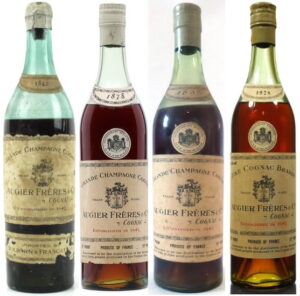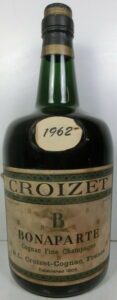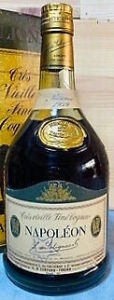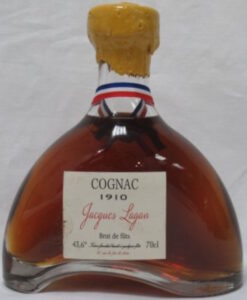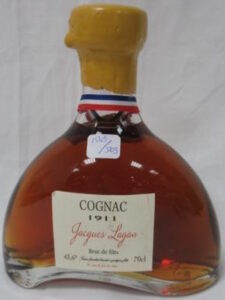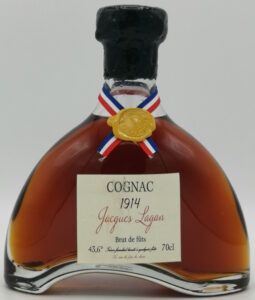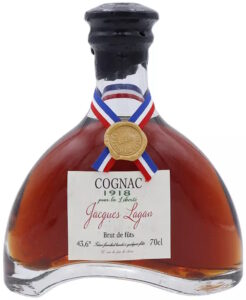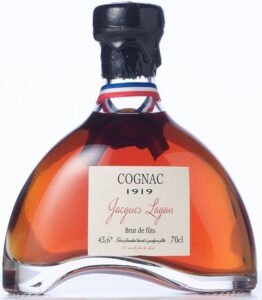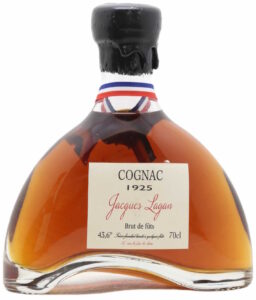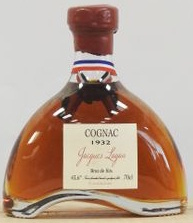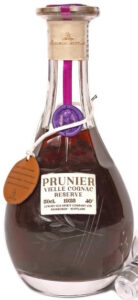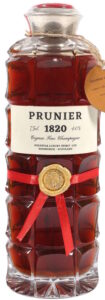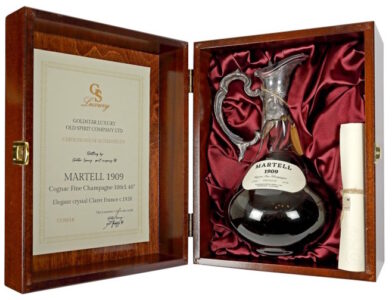Forgeries are not always easy to spot. However, clues can usually be found.
 Denis-Mounié has produced many vintage cognacs, but never used Gold Leaf cognacs to make a vintage. Also the crescent shape label with 1904 on it, was never used by Denis-Mounié.
Denis-Mounié has produced many vintage cognacs, but never used Gold Leaf cognacs to make a vintage. Also the crescent shape label with 1904 on it, was never used by Denis-Mounié.
stop

 This Augier 1888 vintage has a neck label that was originally from a Balluteaud bottle. Augier did use crescent shape neck labels with a vintage indication on it, but they were just a bit different. Like the real vintage bottles below show.
This Augier 1888 vintage has a neck label that was originally from a Balluteaud bottle. Augier did use crescent shape neck labels with a vintage indication on it, but they were just a bit different. Like the real vintage bottles below show.
This is a magnum. Croizet never put a paper shoulder label on the bottle where they used to put wax. If it would be a genuine vintage, they would have stamped the year in wax on the shoulder.
A Napoleon with Très Vieille Fine Cognac from Salignac, Réserve de l’Aiglon. The paper neck label with ‘Réserve 1959’ must have been added later on. There are no known vintages after 1929 from Salignac. And if so, it would have been printed on the label itself.
stop
On the left you see a three star bottle with a 1925 sticker on it. The borders of the label are not the same as the borders of the sticker. If this would have been a vintage, it would have been printed on the label.
On the right side you see the three star bottle that was used.
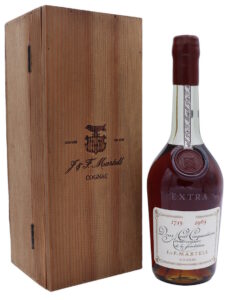
Martell Anniversaire label on a Martell Extra bottle and with a non-matching wooden box.
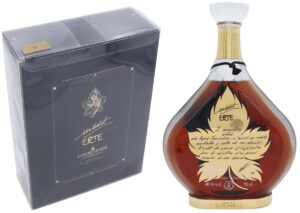 This bottle was brought to my attention by a relation friend who runs an online shop in cognac and other spirits. The bottle number is Roman instead of Arabic and the plastic seal is really bad. The sticker on the plastic case does not exist on other bottles. This bottle was first seen in 2024.
This bottle was brought to my attention by a relation friend who runs an online shop in cognac and other spirits. The bottle number is Roman instead of Arabic and the plastic seal is really bad. The sticker on the plastic case does not exist on other bottles. This bottle was first seen in 2024.


Eschenauer has not used this kind of capsules.
It could have been just recapsuled, but then it had not been done at a certified body.
1889 and 1898 looks to be added later on.
Eschenauer would put the year just under ‘fine champagne’

This 1858 label (sticker) does not belong on this bottle on the left. Below is a genuine 1858 from Sazerac de Forge (Second Empire).
And here are some of the Jacques Lagan fake vintages. They started to come out on the market around 2020-2021. A lot of people began starting to ask questions: how come that they appear al of a sudden in such great quantities? Well, the answer must be: it is not possible. You can’t make brut de fût cognacs from different years that are all 43.6%. And there is no story were they came from, nothing about provenance.
There are other years in circulation as well.
Here are two Prunier bottles, these have been unmasked by Cognac-Expert and the Prunier company has confirmed that they are fake:
And a fake Martell vintage, also unmasked by Cognac Expert and confirmed by Martell:
This is a special case as it has been verified by the Guiness World Records Ltd organisation. Nevertheless, all cognac connoisseurs I have spoken to agree this is a forgery.
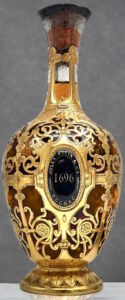 How can it be possible to be real? First of all, the Jules Robin company was only founded in 1850. Ancestors of his had been active since 1783, but were wine merchants. That would mean that Jules Robin must have found and bought up cognac from 1696 somewhere at some point and kept papers to prove it.
How can it be possible to be real? First of all, the Jules Robin company was only founded in 1850. Ancestors of his had been active since 1783, but were wine merchants. That would mean that Jules Robin must have found and bought up cognac from 1696 somewhere at some point and kept papers to prove it.
But it is documented that cognac producers in the 17th century did not store their cognac to let it age. That practice only began in the 18th century. Before that, all cognacs were sold as quickly as possible. And when they started storing cognacs to age them, it was initially only for a few years.
But for the sake of argument, let’s assume that a vintner kept his 1696 distilled cognac in a barrel. At a time when there were no regulations at all. Would he have kept a register? Would that still be available after almost 200 years or more, when Jules Robin found that cask? I cannot believe this.
Besides, why is there only one bottle? We would have heard about it a long time ago.

